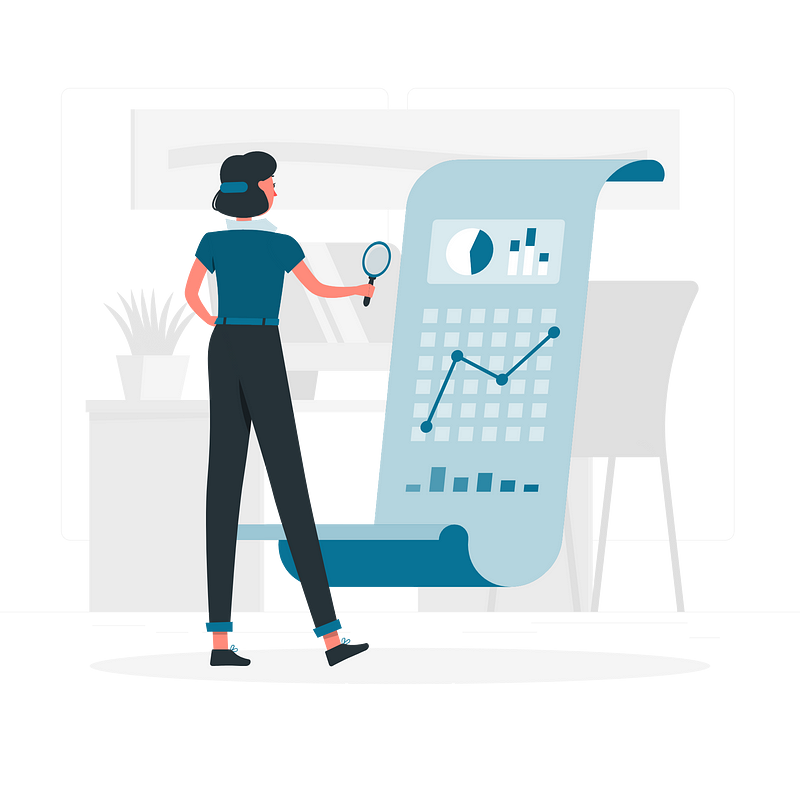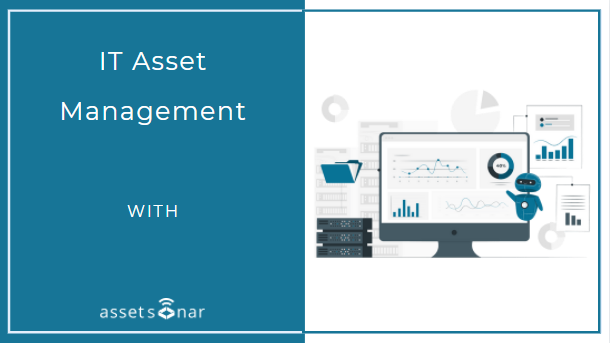In today’s technological age, proper IT Asset Management (ITAM) is a necessary addition to any organization. As businesses expand, so do their IT asset needs. With the increasing volume of IT assets and equipment, it is becoming increasingly difficult for managers to monitor and control their IT inventory flows quickly and efficiently.
What is IT asset management?
IT Asset Management is a business management technique that allows businesses to optimize spending and support strategic decision-making as it relates to IT assets.
At the same time, it allows managers to get a better overview of a company’s total business value, IT asset utilization, and procurement routines. ITAM also enables companies to develop and maintain policies that enable them to properly manage their IT assets, and scale as effectively as possible.
ITAM managers are responsible for maintaining control over inventory and ensuring that business assets fit the organization’s operating needs. They need to continuously monitor the location, configuration, and status of computer hardware and software.
In addition to this, they have to keep track of asset depreciation throughout their lifecycle, so they are able to keep maintenance and procurement costs low. An automated ITAM solution makes this task easier for them.
Functions of IT asset management

The major goal of ITAM is to establish a centralized asset repository that keeps an accurate account of all the hardware and software inventory owned by a business.
It tracks an enterprise’s entire networking inventory and technology services. It aims to reduce the labor required to manage IT asset requirements, while at the same time increasing the accuracy of inventory records.
An IT asset management software application offers a variety of features that can help companies better handle their technology-related processes and functions.
Some important features that a standard IT asset tracking software should have are as follows:
- A single, web-based interface to deploy all hardware and software inventory and IT asset management processes
- A centralized database for tracking all hardware and software assets, so that the details of each asset and inventory are accessible from anywhere, and at any time.
- Information about the physical location, deployment, and status of each asset.
- Detailed history tracking to monitor any changes made to assets in the centralized database system.
- The ability to track depreciation on fixed assets for meaningful insights on an asset’s useful life.
- Complete monitoring of asset life-cycle from procurement to disposal
- The ability to gain access to any computer or server, and escalate it to your IT service help desk.
- Customized reports that provide actionable data on key organization goals, as defined by IT managers
- Integration with third-party apps like Zendesk can help you streamline your IT maintenance processes.
Benefits of IT asset management
The proper management of IT assets allows businesses to extract maximum value from their equipment, right-size ITAM inventory, and optimize purchase decisions and strategies.
An ITAM solution makes it easier for asset managers to do their job more effectively and lowers expenses. Below, we go through a list of benefits that the addition of an IT asset management software can provide to your business:
1. Greater asset visibility
According to research done by Gartner Inc., 30% of all organizations do not know what they own, where their assets are located, and who is using them.
An IT Asset Management software can accurately identify, track and classify IT assets across vendors. Another study by Gartner suggests that 70% of organizations have a 30% discrepancy between planned inventory and actual inventory. An ITAM solution gives businesses a clearer picture of the volume and kind of assets they own, which makes it easier to plan for the future.
This level of visibility into all the IT assets that exist in the organizational IT landscape helps businesses improve infrastructure efficiency and performance, and minimize related overhead expenses.
In addition to this, a more accurate record of IT assets gives IT asset managers the ability to resolve any pending IT-related issues more efficiently and improve the quality of their services across the board. This can lower costs, too.
2. Lower procurement costs

When you have greater asset visibility, it becomes easier to formulate future procurement plans. Without knowing the current value and volume of your assets, it becomes increasingly difficult to plan for future spending on assets.
You may end up over-or under-procuring assets, both of which can cost business money — either in the form of storage costs or price hikes for buying inventory at the last minute.
An ITAM solution centralizes technology-related sourcing, purchasing, and acquisition activities. This allows asset managers to execute their IT asset management plans in a more coordinated manner.
It also gives a more accurate account of your current asset holdings and deployments. This information becomes important as you start charting out your financial planning. It allows asset managers to extract the maximum value from their existing assets, plan well in advance for future asset needs, and eradicate any unnecessary expenses.
An IT Asset Management solution also helps them cut costs by consolidating information on how the IT budget is invested, how it is performing, and how this relates to current utilization and future expenditures.
A recent report suggests that organizations can save around 30% per asset in their first year of implementing an ITAM program.
3. Increased accountability
Asset theft is something every organization, big or small, encounters on a regular basis. According to data collected by International Foundation for Protection Officers, employee theft costs U.S. businesses over $50 billion dollars annually.
As organizations expand, the costs they incur also increase. An IT asset tracking solution enables asset managers to keep an updated and accurate record of asset assignments. This allows them to locate any missing asset that was not reported or checked back in by the user.
With proper ITAM software, managing check-ins and checkouts, employee assignments, asset reservations and more, is a breeze. The traceability of assets across your organization enhances administration and accountability.
You can also identify whether an employee has any unauthorized IT device on their workstation. ITAM platforms enable you to draw up reports relating to custodianship and identify areas with frequent access violations. This bolsters data security and leaves concrete trails that can be followed up on from anywhere, and at any time.
4. Technology lifecycle management
Hardware or software, there’s bound to be disposal or replacement date. Keeping track of an IT asset’s depreciation rate and managing it throughout its lifecycle can be both tiring and time-consuming.
In order for a business to progress, the focus must shift to automated long-term lifecycle management.
IT asset management allows you to keep track of when the hardware is procured, its deployment and use time, and its depreciation rate. An IT Asset Management program provides IT asset managers with detailed information about the current state of the assets.
It helps them track updates, maintenance schedules, and security requirements. This gives asset managers the ability to effectively monitor IT assets from deployment to retirement, and to deploy preventive maintenance techniques if necessary. This helps reduce downtime of individual assets through intentional evaluation and maintenance, saving the business both time and money.
An ITAM solution also helps businesses monitor software license compliance and manage warranties on hardware assets. It also gives administrators an idea of how long a particular software has been running and whether the operating system is up to date.
Before Implementing an IT Asset Management Solution
An IT asset management solution endorses operational efficiency, financial accountability, and long-term asset management. However, it is important to have a proper plan in place before you begin implementing such a solution.
Below are some steps that can help you with the successful deployment of an IT Asset Management software:
Step 1: Self-evaluation

It is important to gather baseline information about the IT asset landscape of your own organization. This will include information like the volume of hardware and software assets owned by your company, the location, and status of these assets, how each hardware asset is configured, etc.
Information like this will help businesses identify their IT asset management needs and demands.
Step 2: Define IT asset lifecycle events
There are many lifecycle stages between the deployment and retirement of an asset. Monitoring these stages is important to accurately record the health and status of your existing assets.
As an example, a standard laptop would need to be procured, assigned, maintained, and retired during an ordinary lifecycle. On the other hand, SD cards would be ‘consumed’ after a while and archived according to organization convention. Mapping out the life cycles of different items is a crucial step here.
Step 3: Choose the right IT asset management software
Once your asset management needs and the value of your existing assets have been defined, you can begin to look at the features of various IT asset management solutions and pick the one that best compliments your demand.
For example, do you require license management or calibration tracking? What kind of access control does your organization need? Is it necessary to have API support for integration with other systems? Identifying ‘must-haves’ like these is therefore extremely important.
Step 4: Deployment

At this stage, you need to pick a solution and plan for the use of the system. The implementation will also require you to train, manage, and integrate the system with the existing workflows and processes of the organization.
Of course, it is important to keep in mind that some platforms are easier than others, and require less onboarding time.
Step 5: Monitor, review, and update
To judge whether the deployed IT management solution has brought about expected levels of success, you need to monitor some key performance indicators. For this, data on the condition and performance of IT assets need to be captured and analyzed on a regular basis.
In addition to this, you can make use of regular feedback from crew members and performance reports. This information can be used to tweak the IT asset management modules or custom features accordingly, helping ensure maximum productivity.
Conclusion
An IT asset management software provides for better visibility into existing inventory, more robust hardware configuration monitoring, simplified IT operations, and improved equipment lifetime.
These benefits can help your business save on costs and improve employee efficiency and accountability. No matter the size of your company, IT asset management can help you streamline your operations and complement your expansion.
AssetSonar gives you centralized control over your IT infrastructure, software licenses, and digital data. It gives businesses greater control over their IT inventory flows and helps them track and report on their technology landscape, more accurately.
About AssetSonar
AssetSonar is a powerful IT Asset Management software used by IT-intensive organizations and businesses all over the globe.
For more assistance, drop us an email at support@ezo.io.







